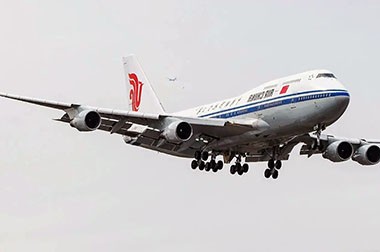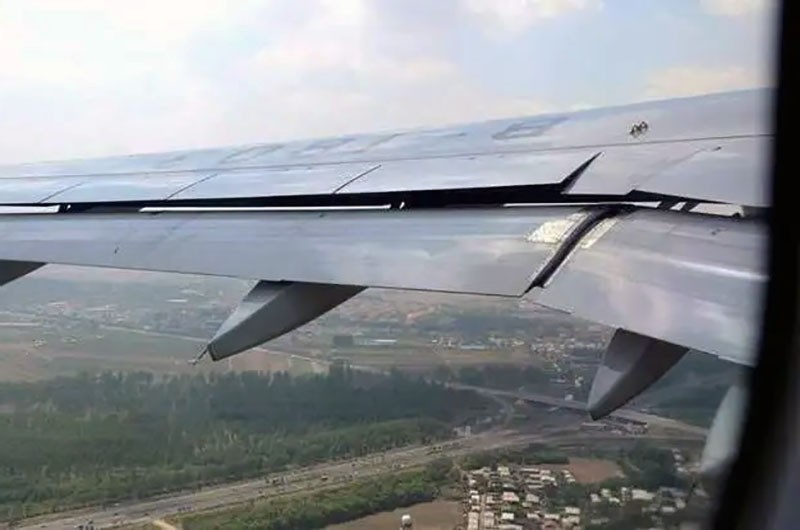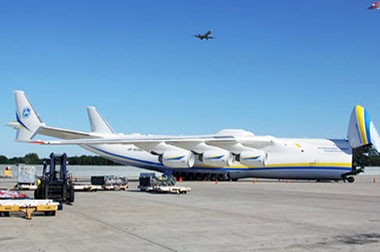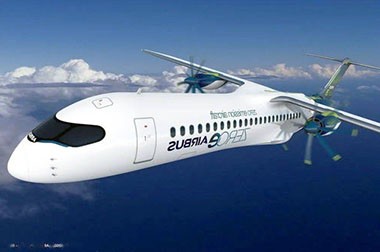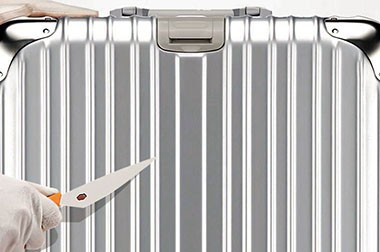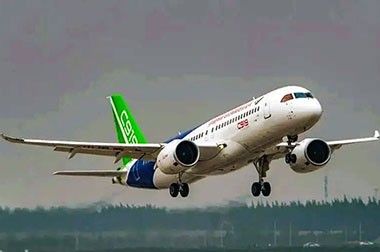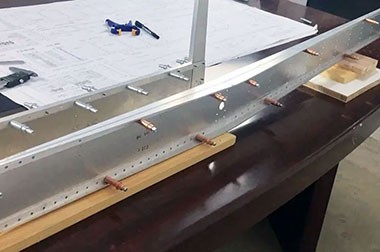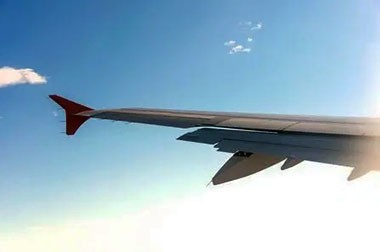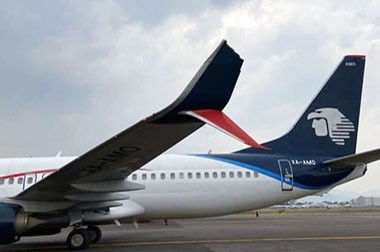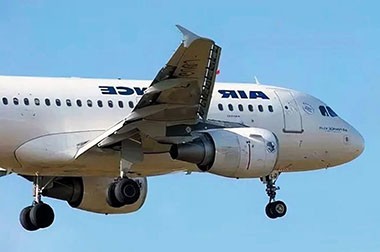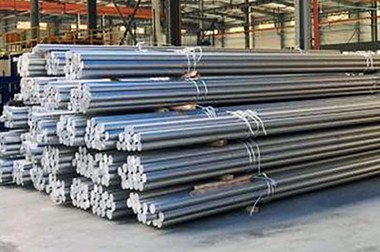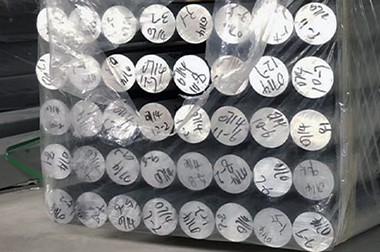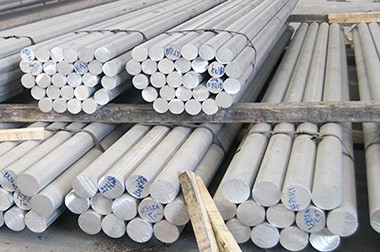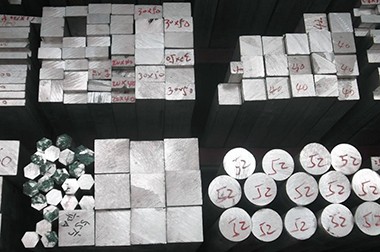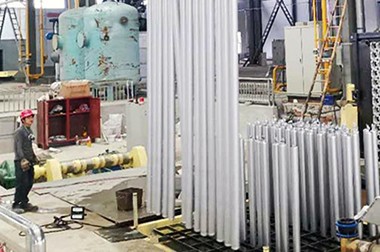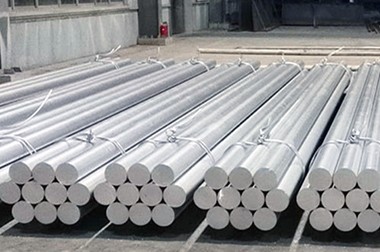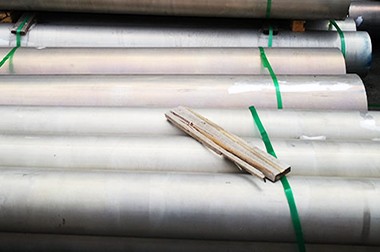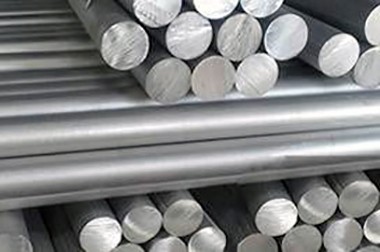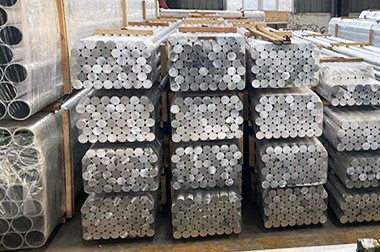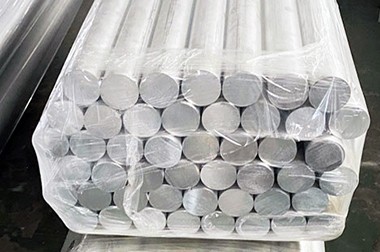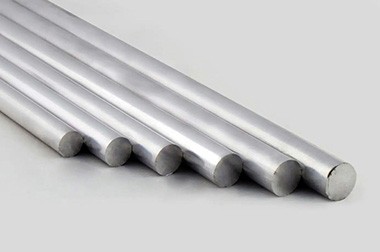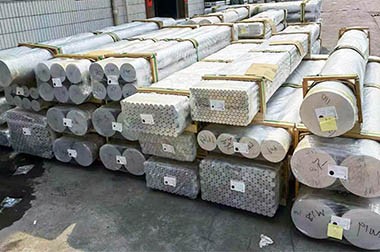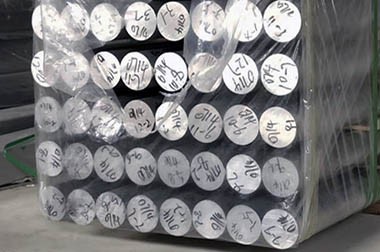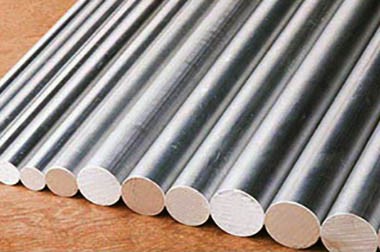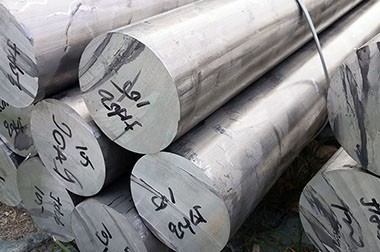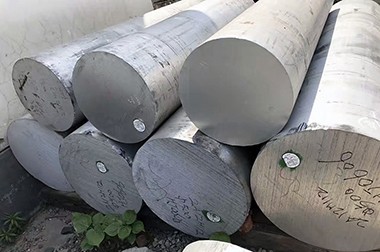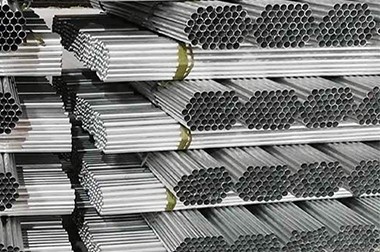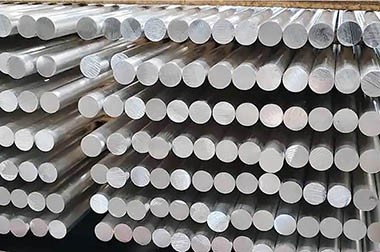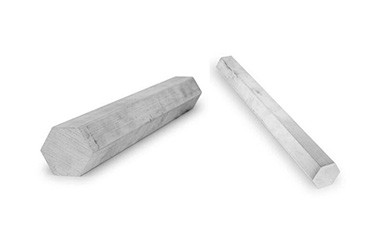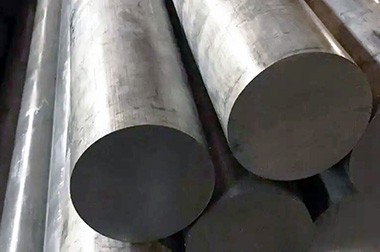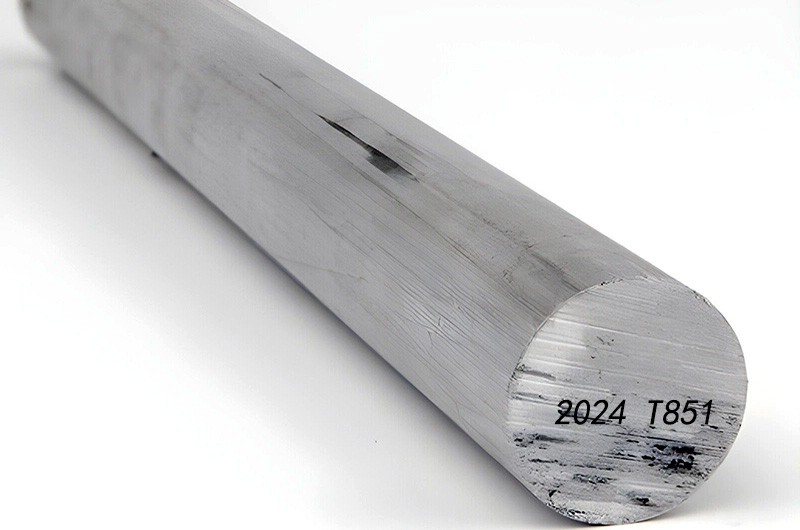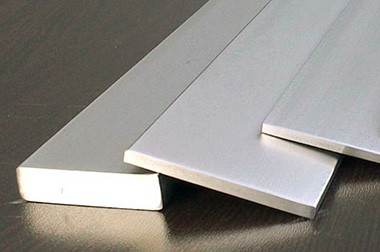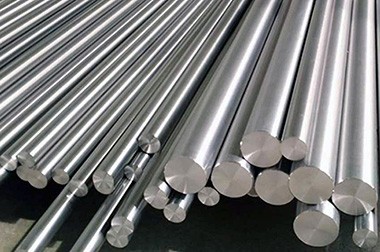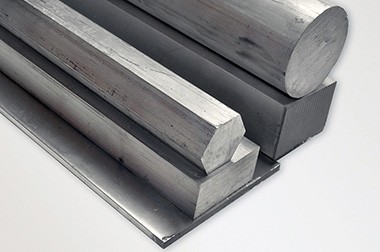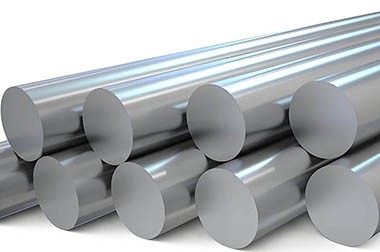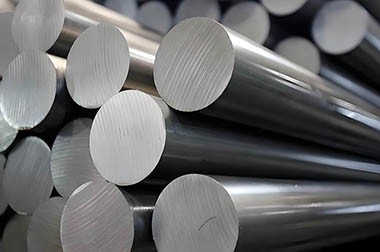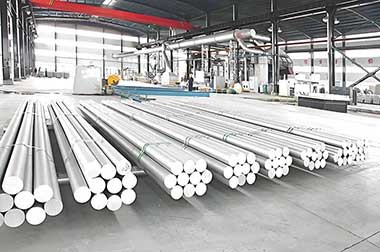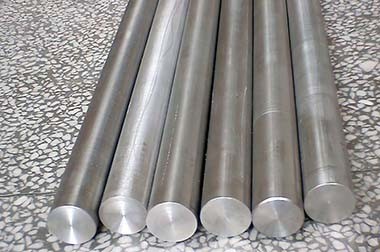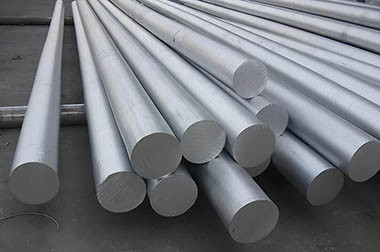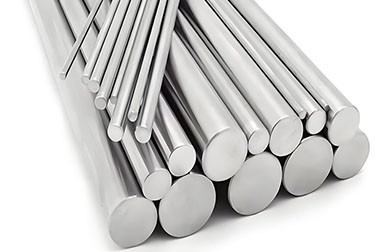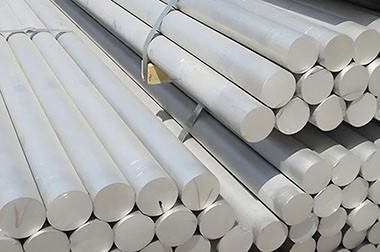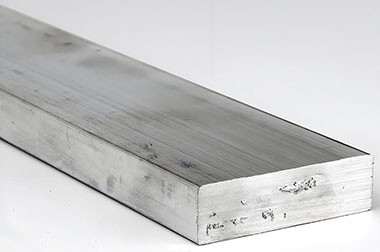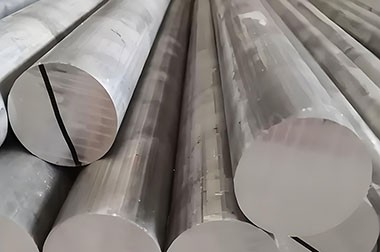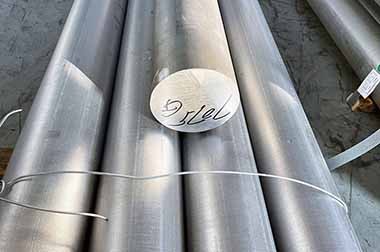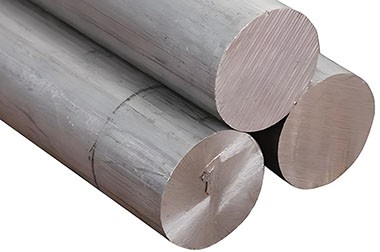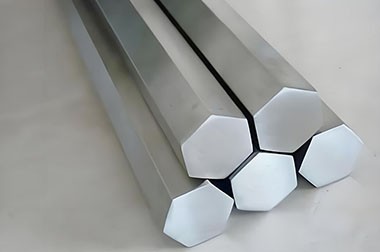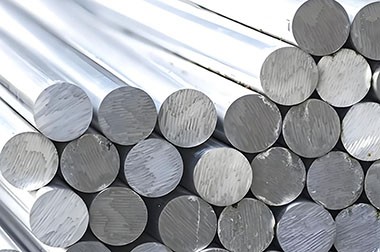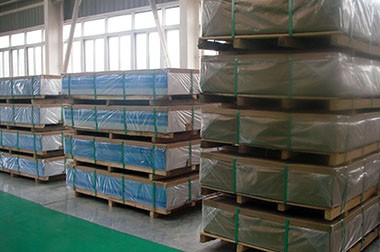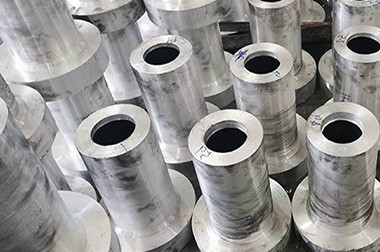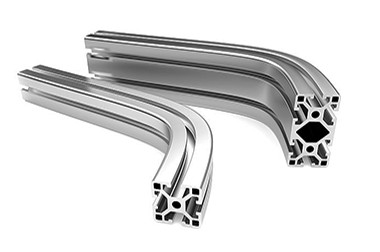7050 T74511 T76511 T73511 Aerospace Aluminum Bars
The main components of 7050 aluminum alloy are aluminum, zinc, magnesium, and copper. It has excellent mechanical properties and welding performance, making it especially suitable for the production of high-load-bearing structural components.
7050 aluminum is a high-performance alloy in the 7000 series, known for its outstanding strength, toughness, and resistance to stress corrosion cracking. It is especially popular in the aerospace and defense industries because components in these sectors often require thick sections while maintaining mechanical properties. Its unique characteristics, such as high strength-to-weight ratio and reliable performance in harsh conditions, make it the material of choice for critical structural components.
7050 aerospace aluminum bar is a high-strength aluminum alloy, widely used in the aerospace, military, and high-performance industrial sectors.
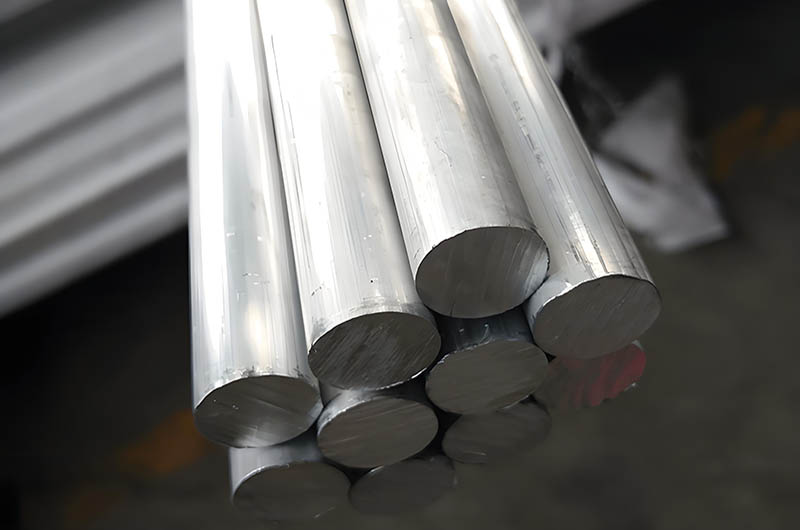
Characteristics of 7050 Aerospace Aluminum Bars
- High strength: 7050 aluminum alloy exhibits excellent strength properties, especially in terms of tensile and yield strength.
- Corrosion resistance: Although the corrosion resistance of 7050 alloy is not as good as some other aluminum alloys (such as 7075), it still offers good corrosion resistance under certain conditions.
- Good formability: 7050 aluminum alloy can be formed through heat treatment and mechanical processing, making it suitable for the manufacture of complex structures.
- Welding performance: Relatively poor, welding is generally not recommended, but special welding methods can be used.
- Good fatigue strength: It performs well under high loads and repeated stress, making it suitable for aerospace structures.
- Stress corrosion cracking (SCC) resistance: Superior to 7075, especially in thicker sections.
- Thermal stability: 7050 aluminum bars maintain performance at high temperatures.
- Machinability: Good machinability with the right tools (carbide tools recommended; cooling lubricants recommended).
- Excellent toughness: 7050 aluminum bars have outstanding stress corrosion resistance.
- Multiple applications: 7050 aluminum bars are particularly suitable for aerospace, defense, and high-performance engineering.
- Processing advantages: Its lower quench sensitivity ensures consistent mechanical properties across various sizes and shapes.
7050 aluminum bar sizes and available forms
7050 aluminum bar sizes
- Bar stock: Diameters from 10 mm to 300 mm; lengths up to 6 meters.
- Tolerances: Extruded bar stock conforms to ASTM B211 standards.
Available forms of 7050 aluminum bar
| Available form | Description |
| 7050 Round Bar | 7050 round bars offer excellent strength and corrosion resistance, widely used in aerospace and machinery manufacturing, especially suitable for manufacturing high-load structural components and critical parts. |
| 7050 Flat Bar | 7050 flat bars can undergo surface treatments such as anodizing to enhance their corrosion resistance and aesthetic appearance. They are commonly used in mold processing, aerospace structural components, and high-strength engineering assemblies. |
| 7050 Square Bar | 7050 square bars have excellent mechanical properties and fatigue resistance, suitable for aerospace, precision machinery manufacturing, and structural engineering, especially in applications requiring high strength and precision machining. |
| 7050 Angle Bar | 7050 angle bars are designed for shipbuilding and welded structures. With excellent corrosion resistance and welding performance, they can be used in marine environments for hull structures, support frames, and other load-bearing components. |
| 7050 Rectangle Bar | 7050 aluminum rectangle bars, known for their high strength and good machinability, are widely used in aerospace, transportation, and industrial machinery sectors. They are suitable as structural support or connecting components. |
| 7050 Other Custom Shapes | 7050 other custom shapes are available based on customer requirements, including special cross-sections and sizes, and can offer cutting, bending, and other processing services to meet personalized needs in aerospace, shipbuilding, and industrial applications. |
Haomei Aluminum also offers the following 7050 aluminum materials:
- AMS 4050: 7050-T7451 Plate
- AMS 4107:7050-T74 Die Forging
- AMS 4108:7050-T7452 Hand Forgings
- AMS 4201: 7050-T7651 Plate
- AMS 4333: 7050-T7452 Forgings
- AMS 4340: 7050-T76511 Extrusions
- AMS 4341: 7050-T73511 Extrusions
- AMS 4342: 7050-T74511 Extrusions
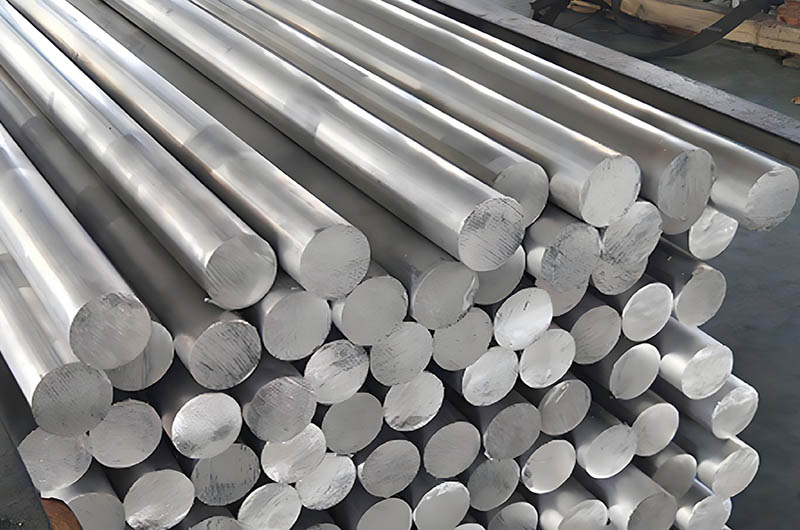
7050 Aluminum Bar Standards and Certifications
- AMS: 4050H (for forgings), 4341 (for plates)
- ASTM: B247 (for bar stock standards)
- Certifications: MIL-DTL-46027, NADCAP Certified Testing.
7050 Aluminum Bar Tempers and Processing
7050 aluminum is available in various tempers, particularly:
- T7451: Offers enhanced resistance to stress corrosion cracking (SCC) and excellent exfoliation resistance, making it ideal for applications like wing skins and fuselage frames.
- T7651: Provides the highest strength and good corrosion resistance, especially suitable for thicker plate applications such as bulkheads and other critical structural components.
Due to the alloy’s low sensitivity to quenching, it retains its properties even in thicker sections — a significant advantage compared to many other aerospace alloys. However, welding is generally not recommended, as heat input can reduce the material's inherent strength.
7050 Aluminum Bar Corrosion Resistance
Medium corrosion resistance; anodizing or coating is recommended for harsh environments.
Overaged temper (e.g., T7) can enhance SCC resistance.
7050 aluminum bar has medium corrosion resistance. In atmospheric and humid conditions, it resists a certain degree of corrosion. However, its corrosion resistance is relatively weak in more aggressive environments, such as marine or industrial atmospheres. To extend service life and ensure structural integrity, anodizing or coating is usually recommended when exposed to corrosive media, as these treatments create an additional protective barrier that enhances its corrosion resistance.
7050 aluminum bar with overaged temper (e.g., T7) significantly improves its resistance to stress corrosion cracking (SCC). T7 temper reduces internal stresses through precise heating and cooling processes while improving grain boundary structure, thereby reducing the likelihood of SCC. This treatment makes 7050 aluminum bar an ideal material for aerospace, military, and high-performance automotive applications that require resistance to complex stress environments.
Applications of 7050 aluminum bar in harsh environments generally require additional protective measures. Although it offers excellent mechanical properties and fatigue resistance, corrosion risks are higher in highly corrosive environments such as marine engineering or chemical equipment. Anodizing can form a dense oxide film on the surface to effectively block corrosive agents. Additionally, spray coatings or protective paints are commonly used to further enhance durability and protective performance.
Surface Treatment and Rust Prevention of 7050 Aluminum Bar
What are the common surface treatments for 7050 aluminum bar?
Surface treatment methods for 7050 aluminum bar include anodizing, electrophoretic coating, spraying, chemical oxidation, and polishing. Anodizing is a common process that forms a dense oxide film on the aluminum surface, enhancing corrosion resistance and wear resistance. Electrophoretic coating provides an additional protective layer that effectively prevents the intrusion of external corrosive agents. Spraying and chemical oxidation are also used for protective treatments in specific environments, while polishing improves surface smoothness and can be used for decorative purposes.
How to prevent 7050 aluminum bar from rusting?
Rust prevention for 7050 aluminum bar primarily includes surface treatment and environmental protection. During storage and transportation, it should be kept dry and well-ventilated, avoiding exposure to humid environments and acidic or alkaline substances. For long-term use parts, surface protection can be enhanced by anodizing, spraying, or electrophoretic coating. Regular cleaning of the aluminum bar surface to remove dust and corrosive agents can also effectively reduce the risk of rusting.
What is the effect of anodizing treatment?
After anodizing treatment, 7050 aluminum bar forms a dense oxide film on the surface, significantly enhancing its corrosion resistance and wear resistance. This oxide film not only effectively blocks the intrusion of air and moisture but also provides excellent insulation and decorative properties. By adjusting the thickness and color of the oxide film, anodizing can meet different aesthetic and functional requirements, making 7050 aluminum bar perform better in aerospace, automotive, and marine environments.
7050 Aluminum Bar Comparison with Other Alloys
How does it compare with 7075 aluminum alloy?
Compared to standard 6-series aluminum alloys:
- 7050 has higher strength (7xxx series for aerospace), with hardness far surpassing 6-series alloys.
- Better fatigue resistance and fracture toughness, but higher processing costs.
Compared to 7075 aluminum alloy:
- 7050 has a higher content of zinc and magnesium, resulting in more pronounced strengthening effects.
- 7050 has superior stress corrosion cracking (SCC) resistance over 7075. Due to the presence of zirconium, 7050 performs better in thicker sections with improved SCC resistance.
- Suitable for applications that require stability in large cross-sections (e.g., aircraft bulkheads).
How does 2014 aluminum alloy compare with 7050?
Compared to 7050 aluminum alloy, 2014 aluminum alloy has better high-temperature performance, especially in environments above 200°C, making it more common in aerospace engine components and high-temperature structures. On the other hand, 7050 aluminum alloy excels in strength and corrosion resistance, but its performance declines more quickly in high-temperature environments, making it less suitable than 2014 aluminum alloy for sustained high-temperature scenarios.
Which is better suited for high-temperature environments?
In high-temperature environments, 2014 aluminum alloy is more suitable due to its excellent heat resistance and thermal stability, making it better for enduring high temperatures and complex stress conditions. In contrast, 7050 aluminum alloy is more suited for structural components that require high strength, fatigue resistance, and corrosion resistance, such as aircraft bulkheads and landing gear.
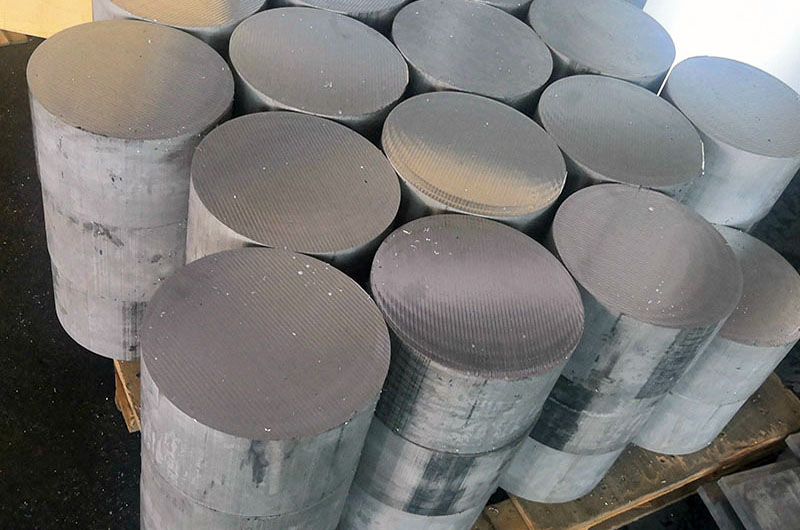
Chemical Composition of Haomei 7050 Aerospace Aluminum Alloy
| Weight% | Al | Zr | Si | Fe | Cu | Mn | Mg | Cr | Zn | Ti | Other Each | Others Total |
| Alloy 7050 min | 87.3 | 0.08 | - | - | 2.0 | - | 1.9 | - | 5.7 | - | - | - |
| Alloy 7050 max | 90.3 | 0.15 | 0.12 | 0.15 | 2.6 | 0.10 | 2.6 | 0.04 | 6.7 | 0.06 | 0.05 | 0.15 |
Typical Mechanical Properties 7050 Aluminum Bars
| Material | Temper | Thickness | Tensile Strength (ksi) | Yield Strength (ksi) | Elongation in 2" % |
| Alloy 7050 Plate (longitudinal) | T7451 | <2.0 | 74 | 64 | 10 |
| Alloy 7050 Plate (longitudinal) | T7451 | 2.0 -3.0 | 73 | 63 | 9 |
| Alloy 7050 Plate (longitudinal) | T7451 | 3.0 - 4.0 | 72 | 62 | 9 |
| Alloy 7050 Plate (longitudinal) | T7451 | 4.0 - 5.0 | 71 | 61 | 9 |
| Alloy 7050 Plate (longitudinal) | T7651 | 0.25 - 1.0 | 76 | 66 | 9 |
| Alloy 7050 Plate (longitudinal) | T7651 | 1.0 - 1.5 | 77 | 67 | 9 |
| Alloy 7050 Plate (longitudinal) | T7651 | 1.5 - 2.0 | 76 | 66 | 9 |
| Alloy 7050 Plate (longitudinal) | T7651 | 2.0 - 3.0 | 76 | 66 | 8 |
| Material | Temper | Tensile Strength (ksi) | Yield Strength (ksi) | Elongation in 2" % |
| Alloy 7050 Bar (AMS 4340) | T76511 | 79 | 69 | 7 |
| Alloy 7050 Bar (AMS 4340) | T73511 | 70 | 60 | 8 |
| Alloy 7050 Bar (AMS 4342) | T74511 | 73 | 63 | 7 |
7050 T7451 Aerospace Aluminum Bars
7050 aluminum alloy in the T7451 temper undergoes solution treatment and aging treatment, providing excellent strength and good corrosion resistance.
7050 T7451 Aerospace Aluminum Bars are commonly used in aerospace structural components such as fuselages, wing spars, wings, and high-strength parts, ideal for environments with high loads and stresses.
7050 T7651 Aerospace Aluminum Bars
The T7651 temper is similar to T7451, but undergoes a stricter heat treatment process to further enhance strength and toughness.
7050 T7651 Aerospace Aluminum Bars are suitable for aerospace applications requiring higher strength and durability, such as critical structural components in military aircraft and high-performance vehicles.
7050 T7351 Aerospace Aluminum Bars
Characteristics: 7050 aluminum alloy in the T7351 temper undergoes solution treatment followed by artificial aging, offering good strength and corrosion resistance and is suitable for welding.
7050 T7351 Aerospace Aluminum Bars are ideal for aerospace structural components that require welding, especially in parts with high strength and toughness requirements.
Applications of 7050 Aluminum Bar
What are the application fields of 7050 aluminum bar?
Due to its strong mechanical properties and reliability, 7050 aluminum bar is used in:
- Aerospace: Fuselage frames, wing skins, and bulkheads that require excellent strength and corrosion resistance.
- Defense and military: Structural components where toughness and high strength are crucial.
- High-performance industrial applications: Where lightweight, durable materials are needed.
- Other special uses: For example, in sports equipment that requires a high strength-to-weight ratio.
Extensive Applications of 7050 Aluminum Bar in Aerospace and Aviation
7050 aluminum bars are widely used in the aerospace industry. Their excellent strength, low density, and corrosion resistance make them an ideal choice for many critical structural components.
Aircraft Structural Components
7050 aluminum alloy is commonly used to manufacture major aircraft structural components such as fuselages, wings, and tail sections. Its high strength and lightweight properties allow aircraft to reduce weight while maintaining strength, thereby improving fuel efficiency and payload capacity.
Wing Components
Wing Spars: 7050 aluminum bars are used to manufacture the main load-bearing spars of wings, which endure various stresses and loads during flight.
Wing Ribs: Used in the internal wing rib structure to provide additional strength and rigidity.
Landing Gear
7050 aluminum alloy is also used in the manufacture of landing gear, which must withstand enormous impact loads and fatigue. The high strength and fatigue resistance of 7050 aluminum alloy make it an ideal material choice.
Composite Structure Supports
In modern aircraft, composite materials (such as carbon fiber reinforced plastics) are increasingly used. 7050 aluminum bars can be used to manufacture supports and connecting components for these composite structures. The lightweight and strength of the aluminum alloy can effectively enhance the overall performance of composite structures.
Engine Components
7050 aluminum alloy is also used in some engine components, especially those requiring good strength and light weight, such as engine mounts and turbine casings.
Aircraft Interior Structures
Cockpit Frames: Used to manufacture the frame structure of the cockpit, ensuring safety and stability under various flight conditions.
Floor Supports: 7050 aluminum alloy is often used in the cabin floor support structure, providing sufficient strength to bear the weight of passengers and cargo.
Precautions
- Welding: Challenging; requires specialized techniques (e.g., friction stir welding). Post-weld heat treatment is usually necessary.
- Forming: Limited cold workability; hot forming is preferred.
- Machining: Use sharp tools and adequate cooling to prevent work hardening.
- Quenching sensitivity: Lower than 7075, allowing slow cooling during heat treatment.
- Storage: Keep dry to prevent surface corrosion.
- Testing: Perform ultrasonic inspection on critical aerospace components.
7050 aluminum bar is the material of choice for high-stress, lightweight applications, where corrosion resistance and reliability are crucial. Its customized composition and tempering make it an indispensable material in aerospace and advanced engineering fields.
You may also be interested in the following
-
7050 T7451 Aluminum for Aircraft Fuselage Reinforcement Frame
7050 T7451 high-strength aluminum alloy is particularly suitable for aircraft fuselage reinforcement frames, longitudinal beams, bulkheads and other structural parts.
-
7050 Aircraft Aluminum for Trailing Edge Ribs
7050 aluminum alloy is selected for the trailing edge ribs due to its strength-to-weight ratio, which helps maintain the optimal aerodynamic performance of the wing.
-
7050 Aircraft Aluminum for Cargo Floor Beams
7050 heavy-duty aluminum is designed for cargo hold floor beams, providing the strength necessary to support heavy loads while maintaining lightweight characteristics.
-
7050 Aircraft Aluminum for Bulkheads
7050 aerospace aluminum is used for bulkhead structures, providing strong structural support and compartments within the aircraft.
-
7050 Aerospace Aluminum for Baggage Bin Structure
7050 is a lightweight yet strong aluminum material used for suitcase structures, providing strength without adding unnecessary weight.
-
7050 7475 Aerospace Aluminum for Wing Attach Structure
Alloys 7050 and 7475 are used in the construction of wing attach structures, ensuring safety and durability during flight.
-
7050 7475 7099 Aircraft Aluminum for Wing Ribs
7050, 7475, and 7099 high-strength aluminum alloys are used to manufacture wing ribs, providing structural support to the wings and enhancing structural integrity.
-
7050 7475 7099 Aerospace Aluminum for Wing Spars
7050, 7475, and 7099 have outstanding strength-to-weight ratios and fatigue resistance, making these high-strength aluminum alloys ideal materials for manufacturing wing spars.
-
2024 7050 7075 Aerospace Aluminum for Horizontal Tail Fittings
Alloys 2024, 7050, and 7075 provide the necessary strength and stiffness for horizontal tail components of aircraft, ensuring reliable control surface performance.
-
7050 Aircraft Aluminum for Leading Edge Ribs
Aluminum 7050 is specifically used for manufacturing leading edge ribs due to its strength and resistance to stress concentration, ensuring aerodynamic performance and structural support.

